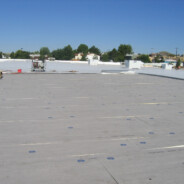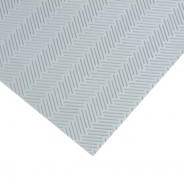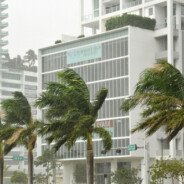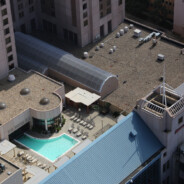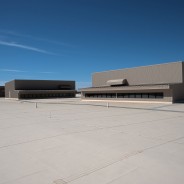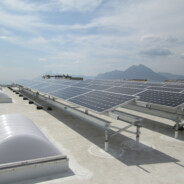Blog
Roofing Insulation Overview
If you want an energy-efficient roof, the first place to start is insulation. Proper insulation is one of the most important contributors to a building’s energy efficiency. Having a high R-value for your roof, the common measurement of thermal resistance, can also aid in achieving LEED® v4 and RoofPoint(TM) certifications. What’s Recommended The National Roofing Contractors Association (NRCA) recommends using two layers of insulation. This can be comprised of two layers of insulation boards or a single layer of insulation and a cover board. Always follow your local building codes when choosing the materials for a roof. Comparison of Three Types of Foam Insulation Type Advantages Caveats Polyisocyanurate...
read moreWalkway Pads: Protection for Your Roofing Investment
It is sometimes assumed that since workers aren’t on a roof every day that worrying about how your roof handles foot traffic is not important. However, today more than ever, roofs are experiencing more foot traffic than you may realize. The typical building rooftop is becoming a crowded place. Technology such as Wi-Fi antennas, satellite and microwave dishes, cell phone communication equipment and solar panels have joined HVAC systems, pipes, ducts, conduits, skylights, elevator equipment and more, all requiring access and maintenance. Green roofs are also becoming more popular and definitely require accommodations for the additional foot traffic. Not to mention the roof itself needs to inspected and maintained on a regular basis....
read morePreparing for Tropical Storms
Just because it is November does not mean you no longer have to worry about hurricanes. As Yogi Berra said, “It ain't over till it's over.” In fact, the official Atlantic hurricane season lasts until November 30. The month of November has had some significant hurricanes including the Cuba hurricane in 1932, a Category 5; Hurricane Lenny in 1999, a Category 4; Kate in 1985, Hurricane Paloma in 2008, and Ida in 2009. Karen Clark & Company (KCC), a leading catastrophe modeling company for the insurance industry, estimates that hurricanes can cost insurers billions of dollars for storm damage. And that doesn’t include the wreckage left behind to buildings, contents, automobiles and for lost time. According to KCC’s report, the...
read moreBallasted Roofs Are Cool!
You may not think that a roofing system developed almost fifty years ago could be environmentally friendly. While it’s true not many people were thinking green back then, it turns out ballasted roofs are indeed eco-friendly and worth a look. Ballasted roofs consist of thermal insulation boards (such as the GenFlex Polyiso product), EPDM single‑ply membrane (such as GenFlex FRM EPDM or AFR EPDM), and are topped with smooth, river‑washed stone or concrete pavers. They are easy and quick to install since they require no fasteners and no adhesives, which can be a source of Volatile Organic Compounds (VOCs). Ballasted roofs are also economical and long-lasting. The ballast material protects the membrane from harmful UV rays and...
read moreSmart Roofs
As a facility manager, would you like to be notified immediately by text or e-mail if a roof leak is developing, or that the snow load on your roof is becoming dangerous, or how about if a roof drain is blocked? Well, it is all possible with a smart roof. A smart roof uses electronic sensors to detect a problem. The sensors are connected to an electronic control panel. Some systems are stand-alone systems and others integrate with your Building Management System or alarm system. Leak Detection Membrane Monitoring Big leaks usually start off small, so the sooner you know there has been a breach in your roofing membrane, the better. Moisture detectors can provide you with that information quickly, even before there are visual indications...
read moreSolar Panel Installation Considerations
Solar panels are becoming more and more prevalent, and maybe you have been tasked with having some installed on your building. However, like with anything else, it is wise to do some research up front. While examining competing solar technologies to determine what will work best, also consider the impact of installing solar panels on your rooftop. There are four primary methods of attaching solar panels: Ballasted—Panels are held in place by weighted material and do not require roof penetration. This is a popular installation method. Penetrating—Panels are mounted on roof supports that penetrate the roof. These should be structurally attached and properly flashed. This method securely attaches the panel and provides good wind...
read more
